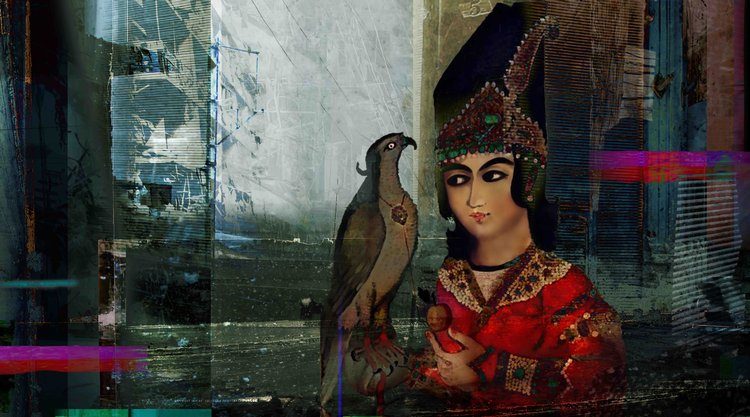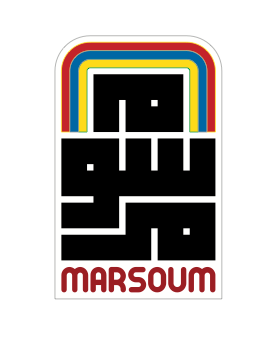
Collector's Handbook: The Tea on NFTs (Non-Fungible Tokens)
Share
The conversation around NFTs has been intensifying ever since the term first came into the spotlight in 2021. From the famous Nyan Cat GIF by Chris Torres that sold for $560,000 to Beeple’s digital collage piece that sold for $69 million at a Christie’s auction, this rather novel digital asset has bred tons of questions on potential online investment in the realm of crypto art.
So, what is an NFT anyway? and what does its emergence mean for art collectors?

Defining Non-Fungible Tokens (NFTs)
For about a decade now, we’ve been moving towards a hyper digitized world where elements of blockchain technology keep on surfacing. Some have stayed, such as cryptocurrencies like Bitcoin, Ethereum, and the ironic yet iconic Dogecoin, while others turned out to be more questionable fads.
NFTs (Non Fungible Tokens) have been one of the most prominent curiosities to come to life. There is no doubt that NFTs will inevitably change the landscape of digital art as we know it; in this journal entry, we will explore what NFTs are and what they could mean for aspiring crypto art collectors and artists alike.
NFT stands for non-fungible token, which means that it is a one-of-a-kind digital asset that represents objects like art, music, videos, memes and just about anything you can picture existing online. Think of it as an individual piece of crypto art. All records of this NFT’s creation and ownership changes live on a public ledger, such as the Ethereum blockchain.

Attributes of NFTs
Each NFT is unique. That is where the word “non-fungible” comes into play. For those of you that don’t want to pull up the meaning , “non-fungible” refers to something that’s irreplaceable and can’t be exchanged for another item due to its uniqueness. Other non-fungible items in the traditional sense include artworks, real estate, as well as certified collectibles and rarities. This attribute is a major element of what makes an NFT valuable. And just like a collectible they have the potential to gain value over time.
Every NFT has one owner at a time and this is of public record and is easy for anyone to verify.
With NFTs you can feel safe when you place your artwork online because it involves some form of scarcity or authenticity. This had never been possible or reachable until the concept of a Non Fungible token were introduced. To achieve scarcity online is very hard to do because content is so easily replicated or copied with little to no value attached to it. With NFTs you can have verifiable scarcity and ownership that is not replicated in the market. And this is all thanks to the revolutionary transparency offered by the underlying blockchain technology.
What Do NFTs Mean for Artists?

While this Journal entry is aimed at collectors, the picture wouldn’t be complete with a mention of the impact on artists. Also, we’ll be publishing an artist centric guide soon, sign up to our newsletter to be one of the first to know!
Through a process named minting, artists or their representatives can now showcase and monetize their creations in a direct manner. NFTs are the equivalent of a certificate of origin which gives value to the artists’ work which they can sell online and still retain the copyright of. NFTs are predominantly reshaping the landscape of digital art by attaching a piece of digital media to a blockchain that ensures its continuity and tracks its ownership.
Now artists can set their prices for their NFT Art Work and not worry about creative theft or plagiarism. The realm of NFT digital art is epitomizing the future where scarcity and authenticity are gaining more influence over buyers because of the uniqueness that NFT platforms guarantee.
What Do NFTs Mean for Collectors?

This is where things get interesting. In the traditional realm, the provenance of the artwork sometimes only goes so far back, making the traceability and authenticity elements harder to certify. However, with Non Fungible Tokens collectors have full transparency into the history of an NFT, from who used to own them to how much they were worth and can easily authenticate the works of art they’re interested in buying.
In more than many ways, NFT art brings things full circle when it comes to installation and video art. In the past you would own the DVD or tape containing the non-tangible art, backed by a certificate of authenticity. In the emerging scenario of NFTs, now you own the digital rights to an artwork, and the proof of ownership and authenticity can be publicly traced by anyone by visiting the blockchain platform it was minted on.
Why Should I Buy What I Can Screenshot For Free?
This question is probably the most speculative element when it comes to NFTs. Initially, most people would regard purchasing an NFT as foolish because of its intangibility and the fact that it can be copy and pasted or screenshot.
While there is some truth to that, one must ponder on the ownership issue at hand. To simplify matters and compare it to physical art collecting, anyone can buy a Van Gogh print, but only one person can own the original.
Owning the original NFT is as valuable as the market makes it. So contrary to people’s first impressions around NFTs, the more a digital asset is shared, screen shot and spoken of, the more viral it goes, and the more value it gains.
The Evolution of NFTs: A Brief Timeline of How They are shaking up the Art World
The existence NFTs can actually be traced back to 2011, around the same time as the emergence of blockchain currencies, most notably Bitcoin. However, they did not hit a critical mass point until early 2021, when the tipping point was driven by two events:
- the famous Nyan Cat GIF by Chris Torres sold for an unfathomable $560,000, and
- in the ultimate form of validation, celebrated auction house Christie’s sold off a digital collage by Beeple for $69 million at a auction.
Since then, countless artists, collectors, investors, auctioneers and gallerists have embraced this wave. In fact, Art Dubai, one of the world’s largest art fairs recently announced a digital section in its 2022 edition.
The next wave of evolution seems to now center around making transactions easier and more accessible to those with no blockchain background. For instance, Crypto exchange Coinbase recently announced a partnership with Mastercard to simplify purchasing non-fungible tokens (NFTs) on their upcoming NFT marketplace. And all the talk of the Metaverse only brings more use cases for NFTs in their natural non-physical habitat.
Interested in a full timeline? Check out this website!
NFT Art Is Here To Stay: The Liberation of Digital Art

If you are an artist or an art collector, it is vital to join the conversation and discover how blockchain as a technology is used with applications such as cryptocurrency like Ethereum. The Blockchain technology allows digital information to be dispersed and not copied. This means that each piece of data or digital information can only have one owner.
The Blockchain takes this digital information and stores it in multiple locations that are updated instantly which makes it harder to hack because the data exists simultaneously in millions of places.
NFTs are creating a new digital value system that we cannot ignore and more art investment experts are starting to genuinely believe that NFTs have passed the fad phase and should be taken seriously. Even if the majority of people find these transactions absurd or regard some of the NFTs being sold as having questionable artistic value, the truth of the matter is that technology is creating a shift in how younger generations choose to value assets.
Remember the days when artists would sell their masterpieces in galleries and would tiredly expend so many hours in networking and promoting their art to only face rejection because they were not well connected. Those days are becoming a distant memory because the NFT ecosystem is hosting a wide audience for artists to tap into to sell their unique art pieces at high prices.
Thanks to the emergence of NFT many artists can now call the shots per se and control the narrative when it comes to getting a fair price for the efforts.
For example, an NFT version of the first ever tweet by Twitter co-founder, and CEO Jack Dorsey was auctioned in early 2021 for an outstanding amount of $2.9 Million. Many artists are joining this progressive movement and selling their art work and other forms of media on these platforms at unimaginable prices.
Ultimately, an NFT is a digital certificate of authenticity, rather than the artwork itself. With the imminent emergence of the meta verse, the status of the NFT is now undisputed.
Browse through our Marsoum Journal and discover new content and do not forget to subscribe at marsoum.co/insider to be notified of our first NFT drop.
Written by: Sarab Atiyat
Sarab Atiyat is a native Winnipeger living abroad in the Middle East working in the Fintech startup ecosystem and loving it! Sarab is a crypto holder and waiting for the big rise so she can sell and retire. She is a blockchain consultant recently certified by IBM Canada and has recently become fascinated with the NFT space.
Check her out on LinkedIn.

